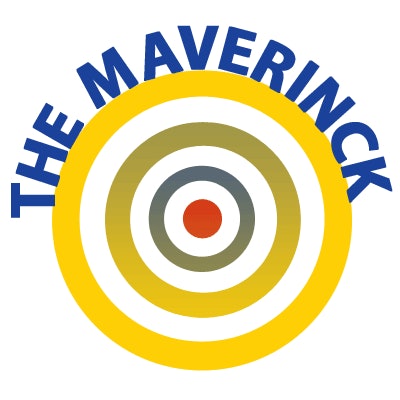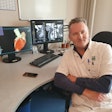
Many attendees of conferences and courses see medicine and radiology through the lens of fanatic devotion to artificial intelligence (AI). Its supporters promise earlier and more reliable diagnoses, fewer examinations and procedures to establish these diagnoses, and lower costs for the healthcare system. They also offer the hope of less morbidity, perhaps even mortality, and altogether better patient outcome.
Since it's the talk of the town -- of scientific journals, newspapers, the internet, conference sessions -- it must be good, or so the theory goes. The neighbor has it, so let's get it, too. And one can even play with it: men against machine, sometimes even on stage in front of a congress audience.
Nobody mentions that AI is seductive but an unsettled and immature technology that requires permanent updates.1 It will be a cash cow for developers and the industry, and add to the exploding costs of medical imaging: Nothing is stable, nothing is really reliable, and there is permanent change that foils the stability and validity of radiological diagnostics.
AI software will never be a final product. The programs always need to be upgraded and updated.
Some years ago I cited Dr. Donald A. Berry, from the MD Anderson Cancer Center in Houston, who summarized his experience with AI in mammography. At that time, AI was still called "CAD" in radiology, "computer-assisted diagnosis" (or "detection"). Much in radiology that is subsumed in AI today had an earlier life going by another name. According to Berry:
An argument for the use of CAD with film or digital mammograms is that it will get better over time. Fine. Researchers and device companies should work to make the software ever better. But this should happen in an experimental setting and not while exposing millions of women to a technology that may be more harmful than it is beneficial.2
Pressures on radiologists
There are social, economic, and political pressures to conform and purchase certain digital devices. Radiologists are also considered consumers and told by others what is good for them. Salespeople are already salivating over AI sales contracts.
 Dr. Peter Rinck, PhD, is a professor of radiology and magnetic resonance. He is the president of the Council of the Round Table Foundation (TRTF) and the chairman of the board of the Pro Academia Prize.
Dr. Peter Rinck, PhD, is a professor of radiology and magnetic resonance. He is the president of the Council of the Round Table Foundation (TRTF) and the chairman of the board of the Pro Academia Prize.Many business models rely on AI to facilitate tasks so much that we no longer want or can do without it. Healthcare, the commercial part of medicine, avoids any accountability; new techniques and methods are introduced at random, praised to the skies enthusiastically, partly militantly by technocrats and paid experts.
The shelf life of many of the new fashions and products is approximately two years. That's at least the interval we were told by two representatives of COCIR (the European trade association representing the medical imaging, radiotherapy, healthcare IT, and electromedical industries) who were invited to a meeting on the future of radiology at the World Health Organization in Geneva some time ago.
Therefore, outcome studies are irrelevant -- all digital procedures or equipment you buy today will be hopelessly outdated in five years, after limited use, the COCIR representatives said. Still, they claim that these very same products will increase productivity, one of the central themes favored by commercial salespeople and hospital managers.
When CT was introduced 45 years ago, the overall costs of medical imaging were between 1% and 3% of overall healthcare expenses; today just the yearly worldwide sales of diagnostic and therapeutic imaging equipment amounts to 100 billion euros; the sales increase by 5% annually.3
The Canadian perspective
Arguably the best and most balanced review paper on AI in radiology was the white paper published by the Canadian Association of Radiologists in May 2018, considering the pros and cons of the introduction of AI in diagnostic imaging. It is worthwhile reading.4 The authors are realistic and down-to-earth in terms of applications and development:
Practicing radiologists need to understand both the value, and the pitfalls, weaknesses, and potential errors that may occur when an AI product performs image analysis. While these algorithms are powerful, they are often brittle, and may give inappropriate answers when presented with images outside of their knowledge set ... an algorithm-evaluating brain CTs may work perfectly for long stretches, but then a new software upgrade to the CT occurs, or a new CT machine comes online, and all of a sudden, the algorithm produces faulty results.
AI is a mix of the virtual digital world and the real world. It's a shift of knowledge and assessment of collected and processed data from the human brain to a black box digital system -- and the blind reliance on the correctness of this system. But it doesn't provide a rational, independent opinion. It also creates an addictive dependence because people will tend to totally rely on it. Already voices are raised claiming that the use of AI will lead to deskilling of the workforce.
As the Canadians remark: "Currently, there is no evidence in the literature that AI can replace radiologists in day-to-day clinical practice. However, there is evidence that AI can improve the performance of clinicians and that both clinicians and AI working together are better than either alone."
Dr. Peter Rinck, PhD, is a professor of radiology and magnetic resonance and has a doctorate in medical history. He is the president of the Council of the Round Table Foundation (TRTF) and the chairman of the board of the Pro Academia Prize.
References
- Rinck PA. CAD as CAD can. Rinckside. 2011;22(9):17-18.
- Berry DA. Computer-assisted detection and screening mammography: Where's the beef? J Natl Cancer Inst. 2011;103(15):1139-1141.
- European Coordination Committee of the Radiological, Electromedical and Healthcare IT Industry (COCIR). Our industry. https://www.cocir.org/our-industry.html. Accessed 20 November 2018.
- Tang A, Tam R, Cadrin-Chênevert A, et al. Canadian Association of Radiologists white paper on artificial intelligence in radiology. Can Assoc Radiol J. 2018;69(2): 120-135.
The comments and observations expressed herein do not necessarily reflect the opinions of AuntMinnieEurope.com, nor should they be construed as an endorsement or admonishment of any particular vendor, analyst, industry consultant, or consulting group.



















